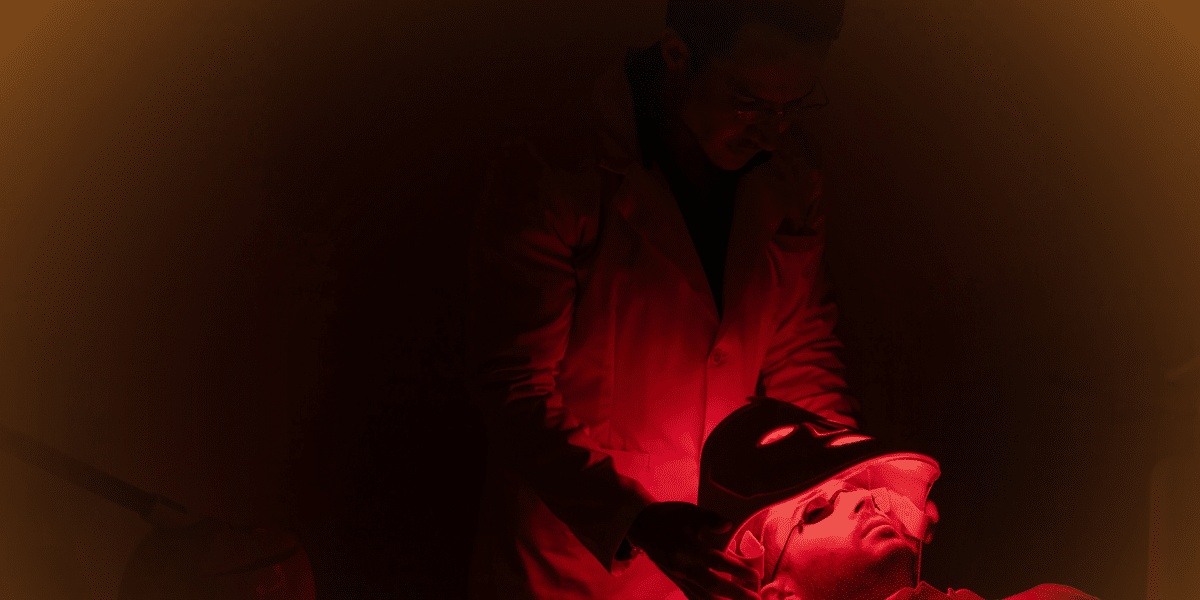Stem cell therapy is perhaps the most revolutionary treatment in the field of regenerative medicine. However, there is actually a far simpler, less invasive therapy that can accomplish some of the same results, if in different ways. We’re talking, of course, about red light therapy lights or RLT.
While stem cell therapy involves injecting young, healthy cells into the body to replace damaged or aging cells, RLT works by energizing and revitalizing your body’s existing cells, helping them regenerate more efficiently. Both therapies aim for the same outcome—restoring damaged tissue to normal function—but they operate through different mechanisms.
In this article, we’ll talk about the differences and similarities between these two groundbreaking treatments. More importantly, we’ll discuss how RLT device providers like Recover Red can offer a safe, reliable solution to protecting your cellular health at home.
What is Stem Cell Therapy?
Stem cells are undifferentiated, “blank slate” cells that have the unique ability to “transform” themselves into specialized cell types, such as bone, muscle, and nerve cells. In stem cell therapy, these younger, healthy cells are introduced alongside damaged ones in order to promote healing.
Because these younger cells have stronger regenerative properties, they are far more effective at evoking tissue repair. In fact, the therapy has proven particularly effective in treating degenerative diseases, orthopedic injuries, autoimmune disorders, and even cardiovascular conditions.
The only problem? The process is extremely sophisticated.
Indeed, most current stem cell therapies involve harvesting stem cells from sources such as bone marrow or embryonic tissues, which poses both logistical and ethical problems. Although promising, it is often costly and complex, requiring clinical supervision and a highly specialized environment for treatment.
Looking at Red Light Therapy
Red light therapy, by contrast, is a far simpler, non-invasive treatment that uses wavelengths of red and near-infrared light to stimulate cellular activity. During treatment, the light penetrates the skin and energizes the mitochondria—the powerhouse of cells—boosting adenosine triphosphate production. This material, often abbreviated as ATP, is essentially the “energy currency” of cells, and is, therefore, critical to cellular repair and regeneration.
Much like stem cell therapy, RLT promotes healing, reduces inflammation, and enhances blood circulation, making it a popular choice for improving skin health, reducing pain, and aiding in muscle recovery. It also has significant anti-aging benefits, including improved collagen production, which reduces wrinkles and enhances skin elasticity.
So while RLT does not introduce new cells to the body, it does encourage the existing cells to repair themselves more quickly. Best of all, RLT can be easily administered at home with all sorts of affordable devices.
RLT and Stem Cell Therapy: A Powerful Combination
While stem cell therapy and red light therapy differ in their approach, they both aim to improve cellular health and promote tissue regeneration. Combining these two therapies creates a potent “one-two punch” capable of amplifying the body’s ability to heal and repair itself.

Pre-Treatment with Red Light Therapy
One of the most significant advantages of combining these therapies is using RLT as a pre-treatment before stem cell therapy. Applying full-body or targeted RLT a week before stem cell harvesting can ensure that donor cells are as energized and healthy as possible.
This is because red light therapy enhances mitochondrial function, boosting the cells’ energy levels and overall health. When healthier, more energized cells are harvested, the success rate of stem cell therapy may improve significantly. At the same time, RLT prepares the damaged areas of the body, creating an optimal environment for the introduction of new, younger cells.
Post-Treatment with Red Light Therapy
After undergoing stem cell therapy, red light therapy can be used to accelerate healing at the injection site and in the treated tissues. RLT’s ability to reduce inflammation, improve blood flow, and enhance cellular function makes it an ideal post-treatment option.
For example, if stem cells are injected into an injured joint, red light therapy can help reduce post-treatment swelling, promote faster tissue repair, and ensure that both the newly introduced stem cells and the body’s existing cells are working at full capacity. This post-treatment application is particularly important in cases where rapid recovery is desired, such as in sports injuries or after surgeries.
At the same time, red light therapy can help prevent scarring by improving skin elasticity and collagen production around the injection site. By encouraging better oxygenation and nutrient flow to the affected area, it enhances the body’s natural healing mechanisms.
A Comprehensive Healing Approach
What makes red light therapy and stem cell therapy such a powerful combination is their complementary nature. Stem cell therapy introduces new cells to replace or repair damaged ones, while red light therapy enhances the function of the body’s existing cells by boosting their energy and regenerative potential.
This dual approach not only accelerates the healing process but also ensures more effective and longer-lasting results. Red light therapy can also be a key component in maintaining the long-term health of the tissues treated with stem cells, as regular RLT sessions post-therapy can help keep cells energized and functioning at a high level, which may extend the lifespan of the stem cells and reduce the need for additional treatments
How Red Light Therapy and Stem Cell Therapy Compare
Again, while both red light therapy and stem cell therapy aim to promote healing and regeneration, they operate through completely different mechanisms. Stem cell therapy focuses on introducing new, younger cells to replace damaged or aging ones, while red light therapy enhances the regenerative ability of the body’s existing cells by stimulating mitochondrial function.
Stem cell therapy is more invasive and complex, requiring clinical expertise, while RLT is non-invasive and can be performed at home. Still, it’s important to note that both therapies offer a promising future for improving overall cellular health, and their combination could lead to even more impressive approaches in tissue repair and recovery.
Conclusion
Red light therapy and stem cell therapy are both cutting-edge treatments that enhance the body’s natural healing processes. When used together, these therapies form a powerful combination that optimizes tissue repair, reduces recovery time, and promotes long-term cellular health. Used on its own, RLT can promote healthier cell activity, reducing the impact of all sorts of common conditions and injuries.
To learn more, visit RecoverRed.com
Disclaimer: This content is for informational purposes only and is not intended as medical advice, nor does it replace professional medical expertise or treatment. If you have any concerns or questions about your health, always consult with a physician or other healthcare professional.
Published by: Nelly Chavez

















